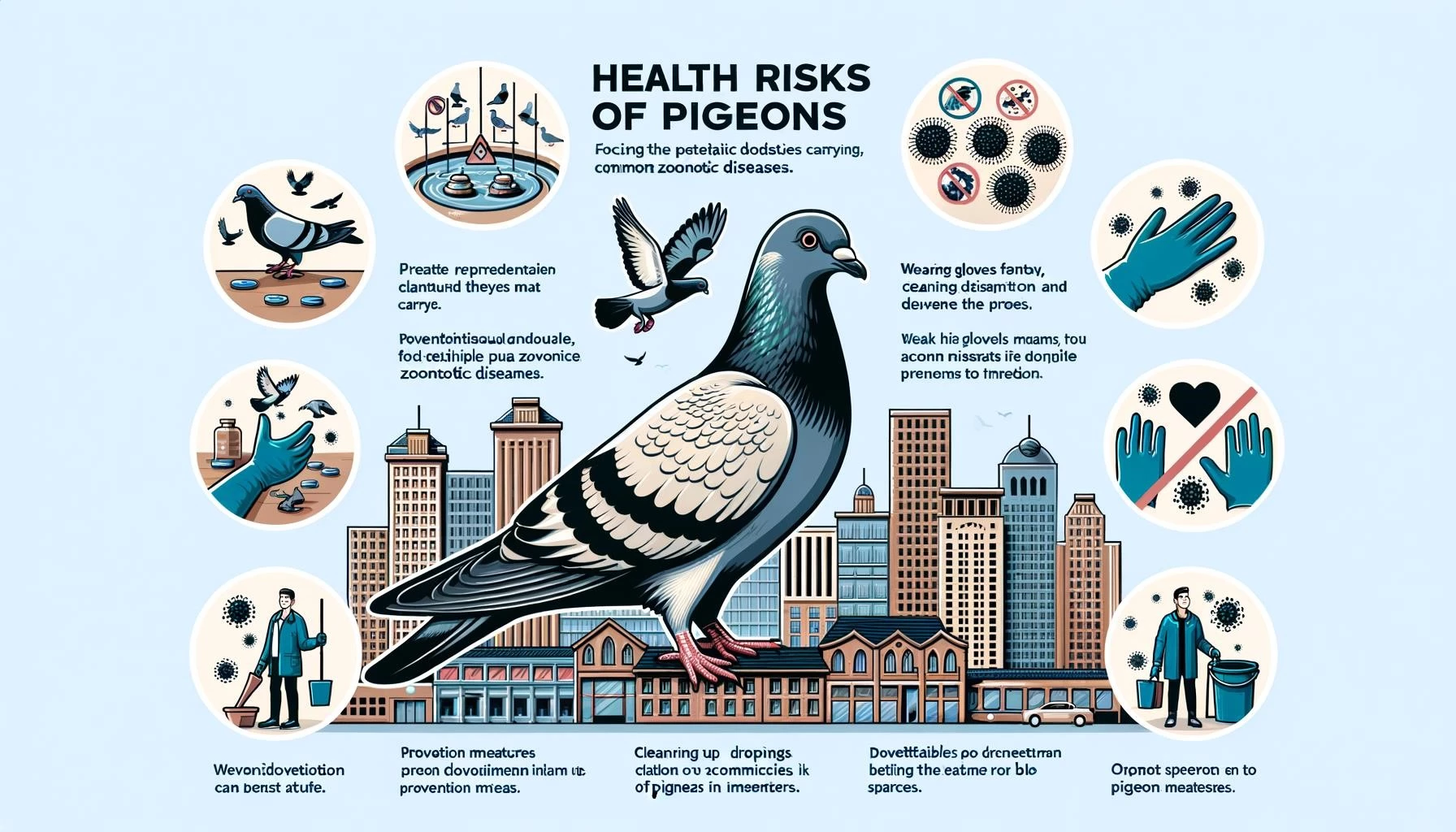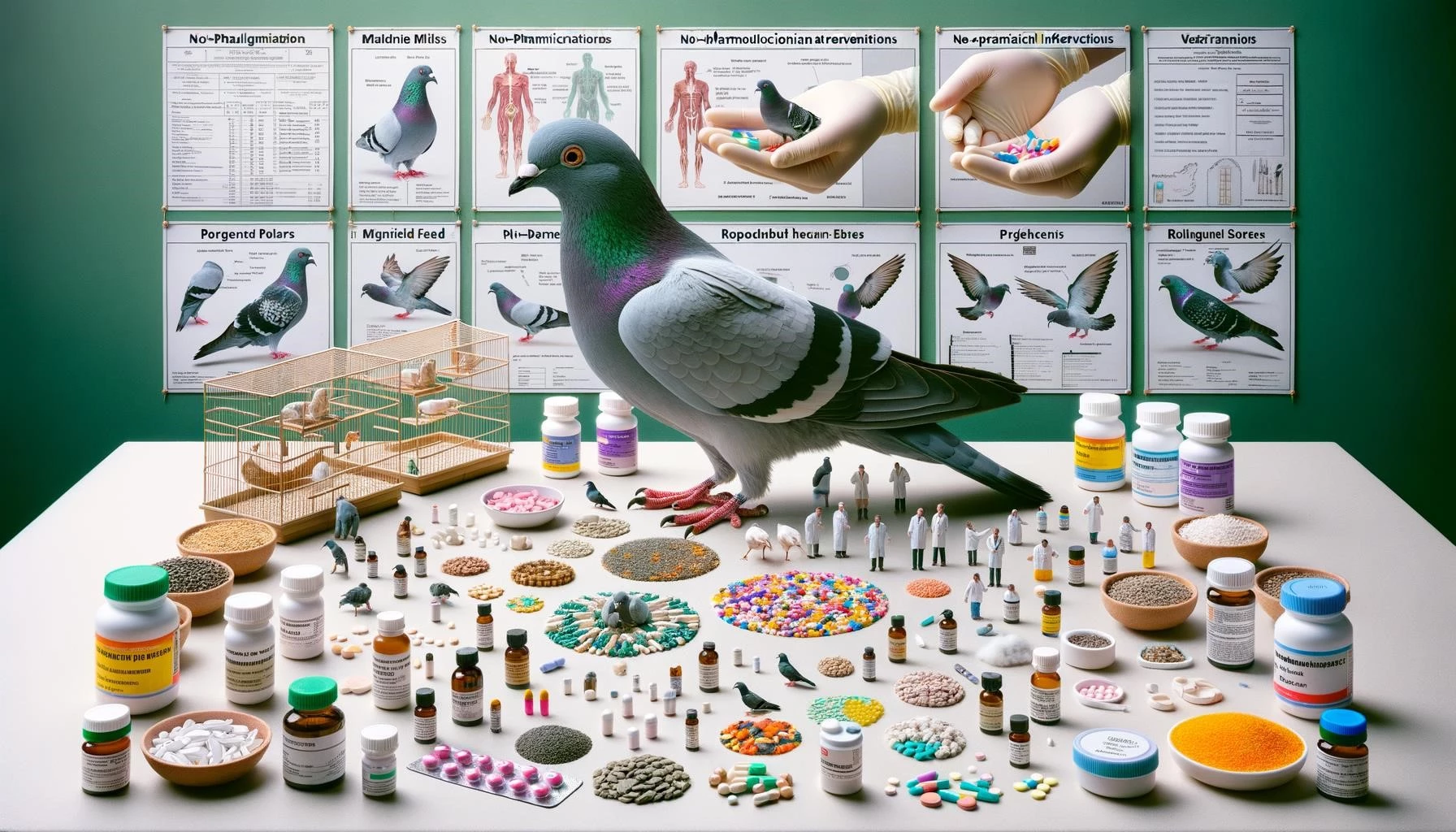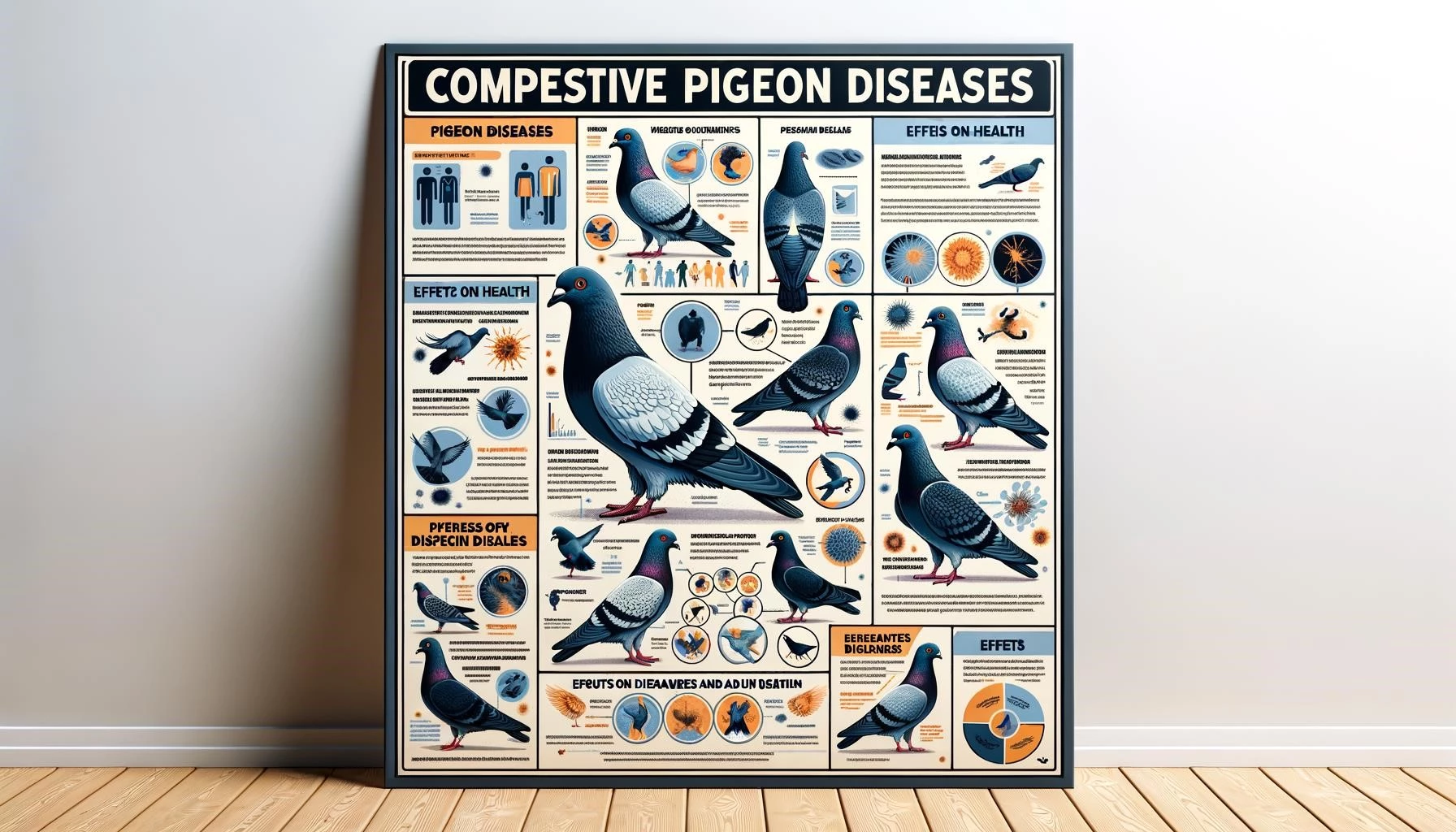Navigating the delicate balance between urban coexistence and public health risks, pigeons, known for their ubiquity in cityscapes, can carry diseases transmittable to humans. The unsuspecting droppings of these birds harbor potential health hazards like Cryptococcosis, Histoplasmosis, and Psittacosis. Moreover, these city-dwellers may also be carriers of avian influenza and Newcastle disease. This piece brings to light the significance of cleanliness, waste management, and public education in mitigating the risks associated with pigeon-related diseases.
Key Takeaways
- Pigeons can carry diseases that pose a risk to public health.
- Diseases associated with pigeon droppings include Cryptococcosis, Histoplasmosis, and Psittacosis.
- Other diseases that pigeons can transmit to humans include avian influenza and Newcastle disease.
- Maintaining cleanliness in areas frequented by pigeons and practicing proper waste management can help reduce the risks associated with pigeon-related diseases.
1. Diseases Associated with Pigeon Droppings
Pigeons are known to carry and spread several diseases that can pose a risk to public health. The most common diseases associated with pigeon droppings include:
1. Cryptococcosis: This is a fungal infection caused by the yeast Cryptococcus neoformans. It can be contracted by breathing in the fungal spores found in dried pigeon droppings. Most people with a healthy immune system do not develop serious illness, but those with weakened immune systems may experience severe symptoms.
2. Histoplasmosis: This is another fungal infection caused by the spores of the fungus Histoplasma capsulatum. The fungus may grow in soil contaminated with pigeon droppings. Breathing in the spores can lead to respiratory symptoms similar to pneumonia. Severe cases can affect other organs beyond the lungs.
3. Psittacosis: This is a respiratory infection caused by the bacterium Chlamydia psittaci, which can be found in the droppings and respiratory secretions of infected pigeons. Humans can become infected by inhaling the bacteria. Psittacosis can cause flu-like symptoms, including fever, headaches, and cough.
It is important to note that while these diseases can be contracted from pigeon droppings, the risk of transmission is relatively low. Most healthy individuals are able to fight off these infections without developing severe illness. However, individuals with compromised immune systems or pre-existing respiratory conditions may be more susceptible to complications.
2. Other Diseases Transmitted by Pigeons
In addition to the diseases associated with pigeon droppings, pigeons can also carry and transmit other infectious diseases to humans. These include:
1. Avian Influenza: Pigeons can be carriers of avian influenza viruses, including strains that have the potential to infect humans. While cases of direct transmission from pigeons to humans are rare, it is important to monitor and control avian influenza infections in bird populations to prevent the emergence of new strains that could pose a significant public health threat.
2. Newcastle Disease: Newcastle disease is a highly contagious viral infection that affects various species of birds, including pigeons. While most cases of Newcastle disease occur in birds, there have been rare instances of human infection. The disease can cause flu-like symptoms and, in severe cases, respiratory and neurological complications.
These diseases highlight the importance of monitoring and managing pigeon populations, especially in urban areas where pigeons and humans often coexist. Implementing bird control measures and practicing good hygiene can help reduce the risk of disease transmission.
3. Public Health Measures and Prevention
To minimize the risks associated with pigeon-related diseases, it is crucial to take preventive measures and promote public awareness. Some effective strategies include:
1. Maintaining Cleanliness: Regularly clean areas frequented by pigeons, such as rooftops, balconies, and parks, by removing droppings and debris. This helps reduce the risk of exposure to disease-causing organisms.
2. Proper Waste Management: Dispose of pigeon droppings in a safe and sanitary manner to prevent the spread of pathogens. Avoid sweeping or vacuuming dry droppings, as this can release potentially harmful dust particles into the air.
3. Bird Control Measures: Implement measures such as bird deterrents, netting, or spikes to discourage pigeons from roosting or nesting in areas where they pose a health risk.
4. Public Education: Raise awareness about the potential diseases pigeons can carry and the importance of taking preventive measures. Encourage individuals to report excessive pigeon populations or unsanitary conditions to the relevant authorities.
By implementing these measures and promoting public awareness, it is possible to strike a balance between urban coexistence and minimizing the health risks associated with pigeons.
In conclusion, pigeons can carry diseases that pose a risk to public health, particularly through their droppings. Diseases such as Cryptococcosis, Histoplasmosis, Psittacosis, avian influenza, and Newcastle disease can be transmitted from pigeons to humans. It is essential to take preventive measures, maintain cleanliness, and promote public awareness to minimize the risks associated with pigeon-related diseases.








